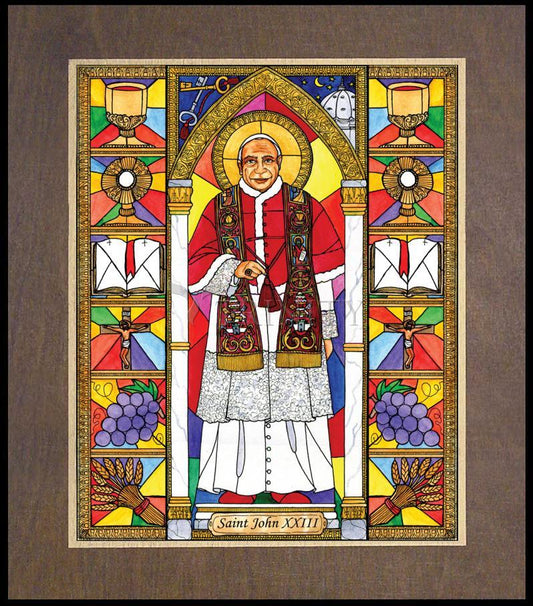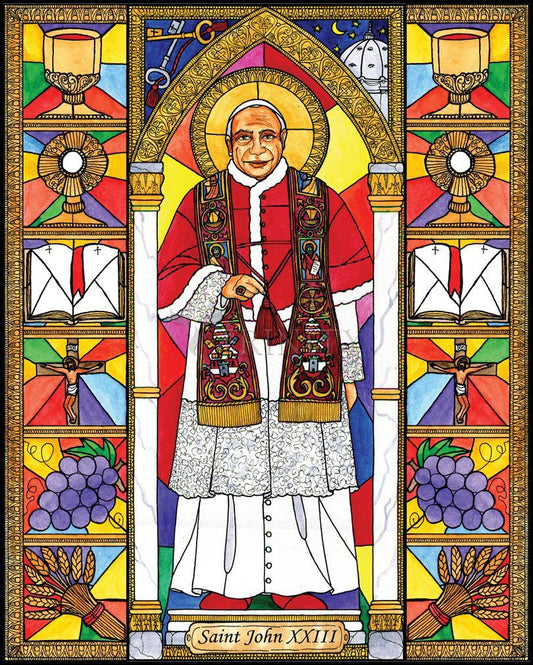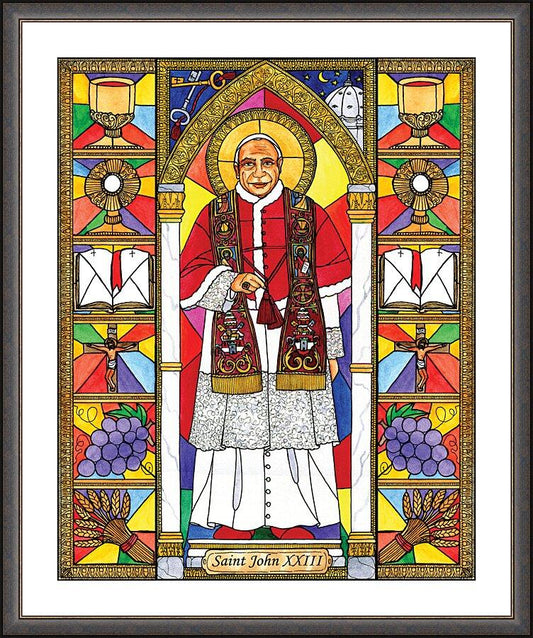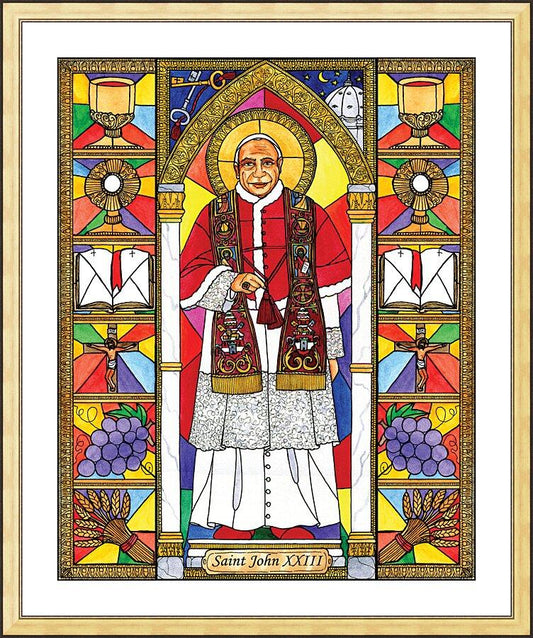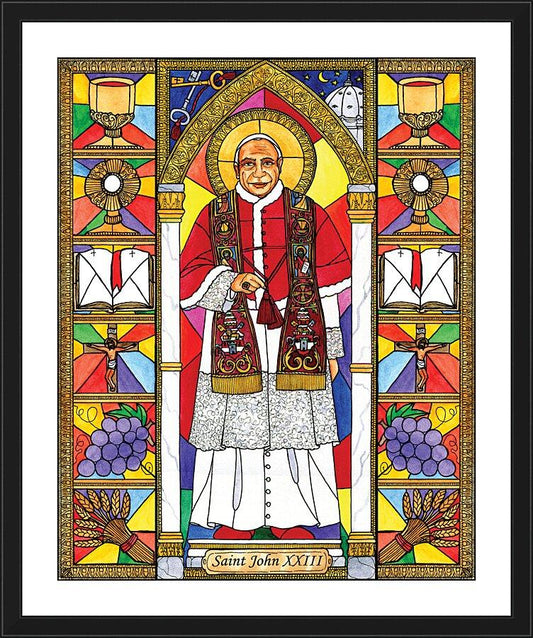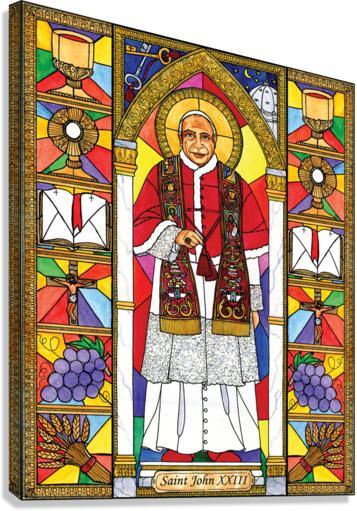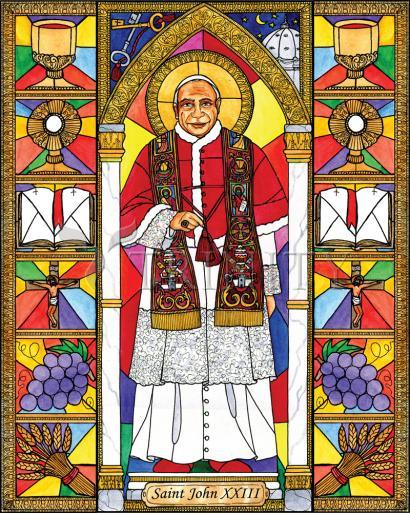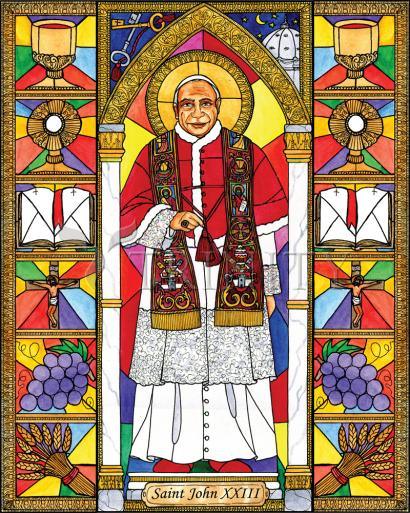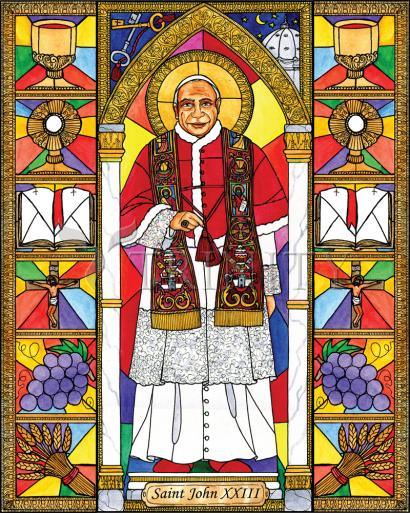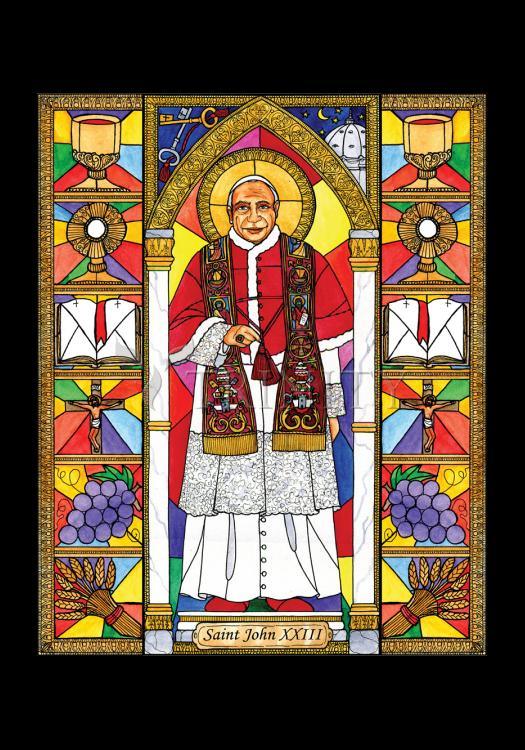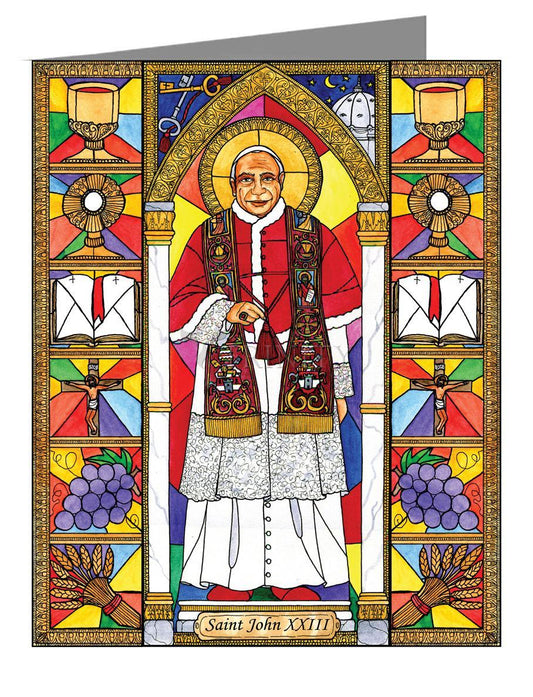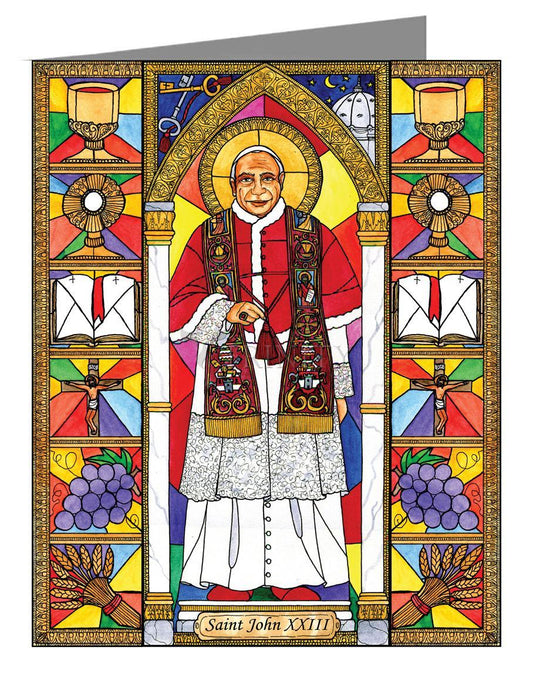ARTIST: Brenda Nippert
ARTWORK NARRATIVE:
Pope John XXIII won over the world with his loving good nature and proverbial wit. He convoked Vatican II and sent the Church into the future. Saint John XXIII was born Angelo Roncalli on June 3, 1881. He was ordained a priest in 1904. In World War 1, he was a chaplain and stretcher bearer. In 1925 he became a bishop and Papal diplomat. During World War II, he helped to save an estimated 24,000 Jewish people. In 1953, Angelo became Cardinal Roncalli and was named Patriarch of Venice. In 1958, at almost 78, he was elected Pope. He took John, his father’s name and became Pope John XXIII. He was known as “the Good Pope” and his humble endearing nature and proverbial wit was loved all over the world. He died in 1963 at the age of 81.
His feast day is October 11.
Read More
Pope John XXIII was a very popular Pope who headed the Catholic Church from 1958 to 1963. Born as Angelo Giuseppe Roncalli, he was elected as the pope at the age of 77 after eleven ballots. Because of his advanced age at the time of election, he was simply expected to be a caretaker pope. However, he ushered in a new era in the history of the Catholic Church by calling the historic Second Vatican Council. Even though he did not live to see it to completion, his efforts for initiating the council were much appreciated. Before becoming the pope he had served in various positions in the church including the papal nuncio in France, Bulgaria, and Greece. He embarked into a career in religion after completing his doctorate in theology. He had also served in the Royal Italian Army during the World War I as a sergeant. While serving as the Apostolic Delegate to Turkey and Greece, he used his position to help save thousands of Jewish refugees in Europe. He was the Apostolic Nuncio to France during the World War II and he made various efforts during the Holocaust to save Jewish refugees from the Nazis. He also wrote several encyclicals, the most important one being 'Pacem in Terris'.
He was born as one of the 13 children of Giovanni Battista Roncalli and his wife Marianna Giulia Mazzolla. He was a descendant of an Italian noble family, albeit from an impoverished branch. His family worked as sharecroppers.
He attended the elementary school in town and went to the seminary at Bergamo when he was 12. He won a scholarship to attend the Apollinaris in Rome where he studied under Umberto Benigni, the Church historian.
He completed his doctorate in theology in 1904.
He was ordained a priest in the Catholic church of Santa Maria in 1904. He met the Pope Pius X in Saint Peter's Basilica.
In 1905, he was made the secretary of Giacomo Radini-Tedeschi, the new Bishop of Bergamo. He worked at this post till the bishop's death in 1914. During this period he also taught apologetics, church history, and patrology in the diocesan seminary.
Italy entered the World War I in 1915 and Roncalli was drafted into the Royal Italian Army as a sergeant and later served as a chaplain. He was discharged from the army in 1919 whereupon he was named spiritual director of the seminary.
He was appointed the Italian president of the Society for the Propagation of the Faith by Pope Benedict XV in 1921.
Pope Pius XI decided to appoint him as the Apostolic Visitor to Bulgaria in 1925, a post he would hold for the next ten years. He was also named for consecration as titular archbishop of Areopolis.
He took up the post of Apostolic Delegate to Turkey and Greece, and titular archbishop of Mesembria in 1935. He used this position to help in saving thousands of Jewish refuges in Europe.
In 1944, Pope Pius XII made Roncalli the Apostolic Nuncio to France. As the Nuncio, he worked hard during the Holocaust to save Jewish refugees from the Nazis.
He was appointed Patriarch of Venice in 1953 and later raised to the rank of Cardinal-Priest of Santa Prisca by Pope Pius XII.
Pope Pius XII died in October 1958. The Papal conclave was held to find his successor. Roncalli was chosen as the new pope after 11 ballots. He accepted the election and took the regnal name of John XXIII.
He made pastoral visits in his Diocese of Rome in December 1958 where he visited polio afflicted children at the Bambino Gesu Hospital. He also visited Rome's Regina Coeli prison.
He called for an ecumenical council almost 90 years after the First Vatican Council. This announcement was made in 1959. The Second Vatican Council brought about a revolution in Catholicism.
Pope John XXIII used the full papal ceremony"he was the last pope to do so. His papal coronation ran for five hours.
The first session of the Second Vatican Council was held in Vatican in October 1962. He delivered a speech to the people at the conclusion of the session which became known as the 'Speech of the Moon'.
He is best remembered for calling the Second Vatican Council which addressed the relations between the Roman Catholic Church and the modern era. The council was commenced under the pontificate of Pope John XXIII in 1962 though the pope did not live to see its completion.



